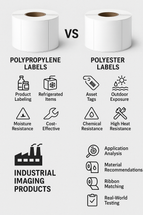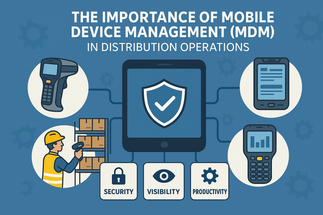For many organizations, printing is not just a convenience, it is a mission-critical requirement. Whether it is labels in a distribution center, multipart forms in logistics, or invoices in high-volume transactional printing, downtime or workflow bottlenecks can translate directly into lost revenue. Microplex printers and products are designed to meet these needs with one defining strength: continuous printing capability that keeps operations moving efficiently.
Continuous Printing: The Core Advantage
Microplex printers stand out because they are engineered to handle continuous-feed printing with reliability and speed. Unlike standard cut-sheet devices that stop and reset between jobs, continuous-feed printers are designed to process long runs of output without interruption. This allows businesses to:
- Eliminate bottlenecks in high-volume workflows by reducing pauses between jobs
- Support long print runs such as transactional statements, invoices, and logistics forms
- Reduce manual intervention by minimizing paper changes and restarts
- Maintain accuracy across large jobs where form alignment and data integrity are essential
This capability makes Microplex printers especially valuable in sectors like warehousing, logistics, banking, insurance, and manufacturing, where large batches of documents need to be produced consistently and without delay.
Integration Across Media and Systems
Continuous printing also extends across multiple media types. Microplex printers handle both continuous fanfold forms and cut-sheet stock, as well as labels and barcodes. With broad emulation support, they integrate seamlessly into legacy ERP, WMS, and host systems without requiring costly software changes. This adaptability means a single Microplex printer can replace multiple specialized devices, reducing footprint while maintaining full workflow coverage.
Reliability for Critical Operations
When jobs span thousands of pages or rolls of labels, downtime is not an option. Microplex printers are built with rugged components, intelligent controllers, and durable engines that sustain heavy workloads without failure. Their design minimizes maintenance interruptions, ensuring that long-run printing jobs finish as scheduled.
Cost and Efficiency Benefits
Continuous printing reduces labor costs by requiring less frequent operator oversight. With fewer stops for paper changes, resets, or troubleshooting, staff can focus on higher-value tasks. Over time, this efficiency contributes to lower total cost of ownership, particularly in high-volume environments where every minute of uptime counts.
Long-Term Value
Microplex’s emphasis on continuous, uninterrupted performance makes their products an investment in operational resilience. Businesses gain not just a printer, but a platform that supports uninterrupted workflows, adapts to multiple applications, and integrates seamlessly with both modern and legacy environments.
Conclusion
Microplex printers and products deliver clear advantages for organizations that depend on reliable, high-volume output. Their continuous printing capabilities enable uninterrupted workflows, minimize downtime, and ensure accuracy in even the most demanding applications. For industries where speed, scale, and reliability are critical, Microplex provides a proven solution that strengthens productivity and reduces operational risk.
Recent Posts
Dec 1st 2025
Understanding Poly Labels: Polypropylene vs Polyester (and How to Choose the Right One)
Nov 24th 2025
The Importance of Mobile Device Management (MDM) in Distribution Operations
Nov 17th 2025



